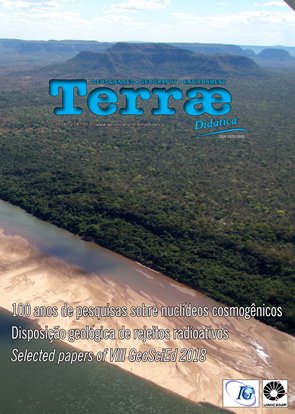Resumo
The 2011 Great East Japan Earthquake and Tsunami (GEJET), reminded us Japanese of the harsh realities of the natural envi-ronment in the Japanese Archipelago and the importance of crisis management systems. However, the treatment of disasters has not been neglected in Japan, where natural disasters have historically occurred. In Japan, here are two separate approaches to handling natural disasters in formal education. The first is learning within specific subject areas, particularly social studies and science. The second is educational activities that take place outside subject teaching hours. Although natural disasters are common in the Japanese Archipelago, this arc-shaped string of islands, surrounded by the ocean and possessing a rich natural landscape, has greatly influenced Japanese culture, science and technology, and education. The Pacific Ocean coastline of the Tohoku region has been frequently hit in recent years by large killer waves (Tsunami) that have repeatedly resulted in serious damage. The main difference between the 2011 GEJET, and the previous tsunamis that hit the region is the accident that oc-curred at the Fukushima I Nuclear Power Plant. Because the perspective of understanding science and technology from a social context is closely related to issues in education today.Referências
Fujioka T. 2006. Development of environmental education from the viewpoint of period of integrated study. Environmental Education, 16:32-38.
Fujioka T. 2011. Expectations for science education oriented towards the construction of a sustainable society. In: Fujioka T ed. 2011. Environmental education and integrated studies periods. Tokyo: Kyodosyuppan.
Fujioka T. 2015. Education for disaster risk reduction after the UNDESD (United Nations Decade of Education for Sustainable Development): From the viewpoint of construction of the model. Environmental Education in Japan, 24:40-47.
Fukushima Prefectural Board of Education. 2014. Disaster Prevention Educational Materials Nurturing a “the zest for living.” Fukushima, Japan: Fukushima Prefectural Board of Education.
Ministry of Education, Culture, Sports, Science and Technology. 2012. Research report on the response of schools etc. to the Great East Japan Earthquake of 2011. Tokyo, 34: Ministry of Education, Culture, and Sports.
Ministry of Education, Culture, Sports, Science and Technology. 2013. Development of disaster prevention education nurturing a “the zest for living.” Revised version; 1-233, Tokyo, Japan: Ministry of Education, Culture, Sports, Science and Technology..
Terada T. 1934. Natural disaster and national defence. In: Toyotaka K. ed. Terada Torahiko essay collection; fifth Volume, Iwanami Shoten. 305.
A Terrae Didatica utiliza a licença do Creative Commons (CC), preservando assim, a integridade dos artigos em ambiente de acesso aberto, em que:
- A publicação se reserva o direito de efetuar, nos originais, alterações de ordem normativa, ortográfica e gramatical, com vistas a manter o padrão culto da língua, respeitando, porém, o estilo dos autores;
- Os originais não serão devolvidos aos autores;
- Os autores mantêm os direitos totais sobre seus trabalhos publicados na Terrae Didatica, ficando sua reimpressão total ou parcial, depósito ou republicação sujeita à indicação de primeira publicação na revista, por meio da licença CC-BY;
- Deve ser consignada a fonte de publicação original;
- As opiniões emitidas pelos autores dos artigos são de sua exclusiva responsabilidade.

